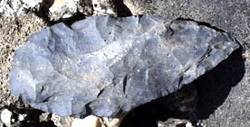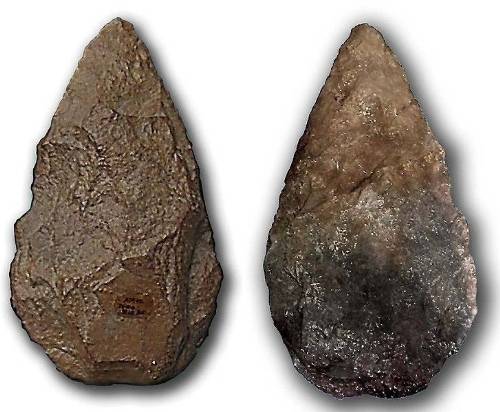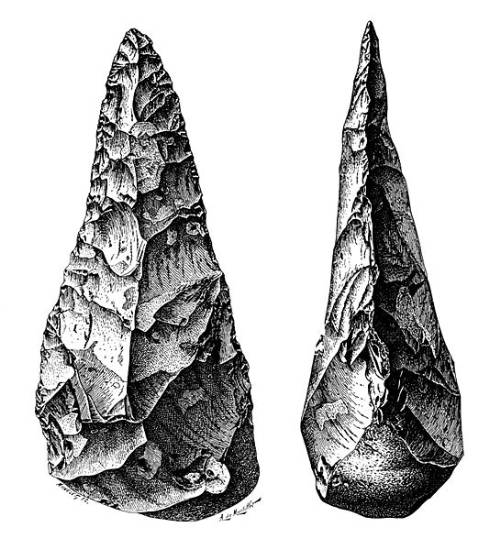Acheulean Biface
Enlargements
|
|
EUGENE M. MCCARTHY, PHD GENETICS

|
The Acheulean biface shown below, dating to approximately 350,000 B.P., is from a site at Atapuerca, a small town in the province of Burgos in northern Spain. Bifaces are two-sided stone tools produced by chipping away flakes ("lithic reduction"). So they are have flake scars on both sides. These hand axes were used for a variety of purposes. They are usually convex in shape. This particular ax is shaped from quartzite.

|
Below is another Acheulean hand ax, from the site for which the Acheulean is named, Saint-Acheul, a hamlet in northwestern France. Dating to about 400,000 B.P., this tool was chipped out of flint.
 |
Most shared on Macroevolution.net:
Human Origins: Are we hybrids?
On the Origins of New Forms of Life
Mammalian Hybrids
Cat-rabbit Hybrids: Fact or fiction?
Famous Biologists
Dog-cow Hybrids
Prothero: A Rebuttal
Branches of Biology
Dog-fox Hybrids